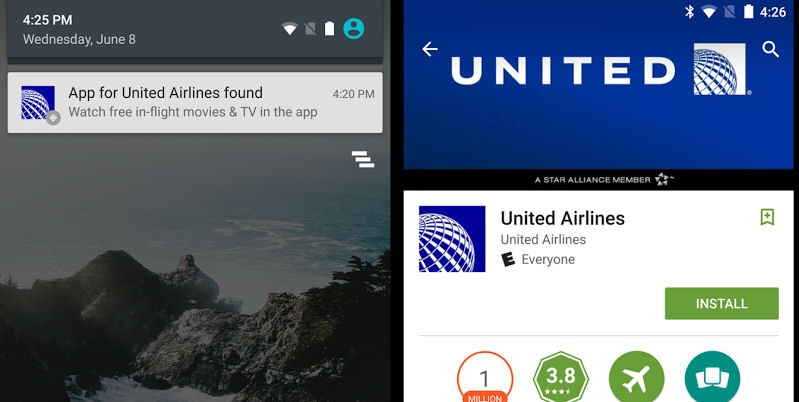Google’s Android smartphone OS has introduced a new location-based facility to the Play Store, while Lenovo has launched the first smartphone based on Google’s Tango AR technology.
June 10, 2016

Google’s Android smartphone OS has introduced a new location-based facility to the Play Store, while Lenovo has launched the first smartphone based on Google’s Tango AR technology.
Nearby is an attempt to introduce a location element to app discovery by suggesting apps and websites (via Chrome) according to where the user is. While not explicitly stated in the Android blog announcing the move, Nearby seems to build on Google Now, an AI facility launched in 2012 that pushes ‘useful’ information at the user depending on what the smartphone reveals about their location, habits, etc.
Google Now has evolved into Google Assistant – a Siri-like, voice activated tool that is being designed to take interaction with Google, and thus the internet, to the next level. When Google Assistant was announced it was apparently designed to work with other initiatives such as Google Home and it could be that Nearby owes some of its functionality to this AI technology.
“To use Nearby, just turn on Bluetooth and Location, and we’ll show you a notification if a nearby app or website is available,” said the blog. “Once you’ve opted-in, tapping on a notification takes you straight into the intended experience. If you’re not interested, just swipe it away to give us a clear signal. Nearby has started rolling out to users as part of the upcoming Google Play Services release and will work on Android 4.4 (KitKat) and above.”
Another Google mobile initiative has also reached fruition via the launch of the Phab 2 Pro by Lenovo – a 6.4-inch phablet that is the first to support the Project Tango augmented reality platform.
Lenovo bought the remnants of Motorola Mobility from Google in 2014 after the US internet giant failed to find much use for it. An additional benefit of the acquisition was an inherited degree if intimacy with the Android R&D operations, which resulted in Lenovo being announced as the first Tango OEM partner at the start of this year.
Tango is an attempt to take AR – looking at the real world via your smartphone camera and screen to receive superimposed digital information – to the next level by introducing things like virtual objects. It also contributes to the location and navigation functions via its awareness of the user’s surroundings.
“Put simply, we wanted to take what was an amazing concept and transform it into a commercially viable mobile device,” said Jeff Meredith, GM of Android and Chrome Computing at Lenovo. “From the moment we saw Tango, we knew it could become pervasive, just like GPS. However, to truly make the Phab 2 Pro a game-changer, we developed it at an affordable price for mainstream consumers, delivering not just a bleeding-edge phone, but an all-around fantastic phone that’s first to market.”
From the moment phones started coming with GPS chips as standard LBS has been a ‘next big thing’ waiting to happen. While it’s easy to imagine a utopia in which our phone anticipates our needs based on where we are and what we’re doing, consumer adoption of LBS initiatives has been slow. Nearby and Tango won’t necessarily change this by themselves, but they could help educate the market further on the benefits of location-based services.
About the Author(s)
You May Also Like








.png?width=300&auto=webp&quality=80&disable=upscale)


_1.jpg?width=300&auto=webp&quality=80&disable=upscale)


.png?width=800&auto=webp&quality=80&disable=upscale)